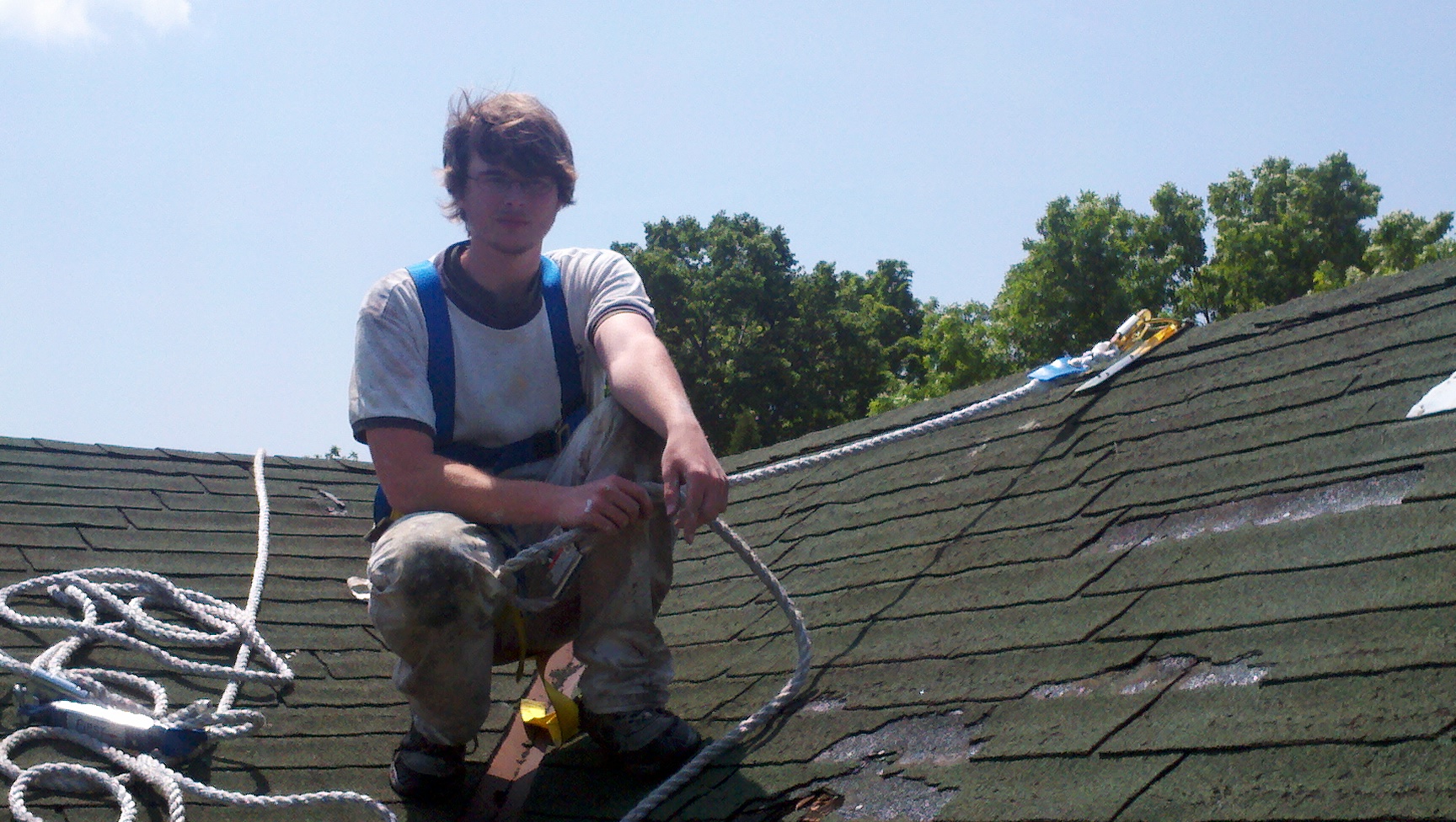Roof Safety
Years ago I was shopping for insurance for DGD Services, as part of my search I found a local business insurance company. One afternoon I stopped by their office to get a quote. I sat down at an agents desk, after the introductions the agent asked "What does DGD do?" to which I rattled off a number of home improvement services, to which they nodded along politely with each one I listed. The last service I listed was roofing and the agent immediately leaned back in their chair and said "Its going to be hard to get you insurance to do roofs" they then explained how roofs are very dangerous and where a lot of claims come from. We eventually got a policy, but what makes roofs so dangerous and how can anyone be safe on one?

Why the Danger?
You’re Always at Risk to Fall:
When you’re on a pitched roof you always have a chance of falling off of the roof and sustaining serious injuries this is regardless of the the weather, roof condition, material or any other factor. Even expert roofers and other professionals have had near-death experiences with falling off a pitched roof.
When you are on a roof there is a reason why:
Few people get on a roof unless there’s a problem or they suspect there is a problem. Due to this, when people get on the roof there’s likely a wide range of problems, for example, missing, curved, and loose shingles, deck rot, and structural deficiencies. These problems contribute to a fall risk.
How to Stay Safe
Work only during good weather conditions and avoid extreme heat/cold
The majority of roofing materials will become hot in hot and sunny weather and can cause burns, in addition asphalt shingles become soft and become prone to tearing underfoot. When roofing materials become wet they can become slick. Cold weather can also hinder the proper execution of roofing work by preventing asphalt shingles from adhering to each other. Better side with caution and always wait for ideal weather before you begin roofing work.
Ladders should be stable and secure
Always make sure that there are enough ladders for the job and that they’re all safe to use. Check your ladders for safety as some of them may need repair or replacement to prevent fatal accidents or injuries. Make sure ladders extend past the roofline.
Wear proper PPE
Wearing proper PPE such as helmets, soft sole closed toed footwear, gloves, pants, and fall protection harnesses can help save you when slips and falls occur. Perform regular PPE checks according to manufacturers specifications to ensure the PPE will be effective.
Carefully position ropes and extension cords so they’re not underfoot
When not properly handled, ropes and cords not only hinder movement, they can also cause fatal accidents. Always follow proper use of ropes, cords, and safety harnesses.
Sweep the roof before and after work if necessary and make sure it is clear of dirt and debris
One random nail can cause slips while snow or leaves can hide areas of the roof that should be visible. Always keep the roof clean and free of items that can cause accidents or materials that can hinder the visibility of the roof.
Use guardrails whenever possible
Guardrails serve as a visual and physical barrier that protects from falls. It reduces the risk of injury and death from working on roofs.
Skylights should be guarded appropriately
Skylights and other openings on roofs should be properly covered and labeled with visible warning signs to prevent workers from leaning on or falling into them.
Be careful of slate, metal, and tile roofs
These roofing materials are very slick, if you are not properly trained, avoid these roofs.
Stay clear of service heads
Service heads are where electricity enters a building for buildings that receive their power from overhead lines. These present an electrocution hazard and should be avoided. If work must be done around them, have the local utility drop the service before proceeding.
